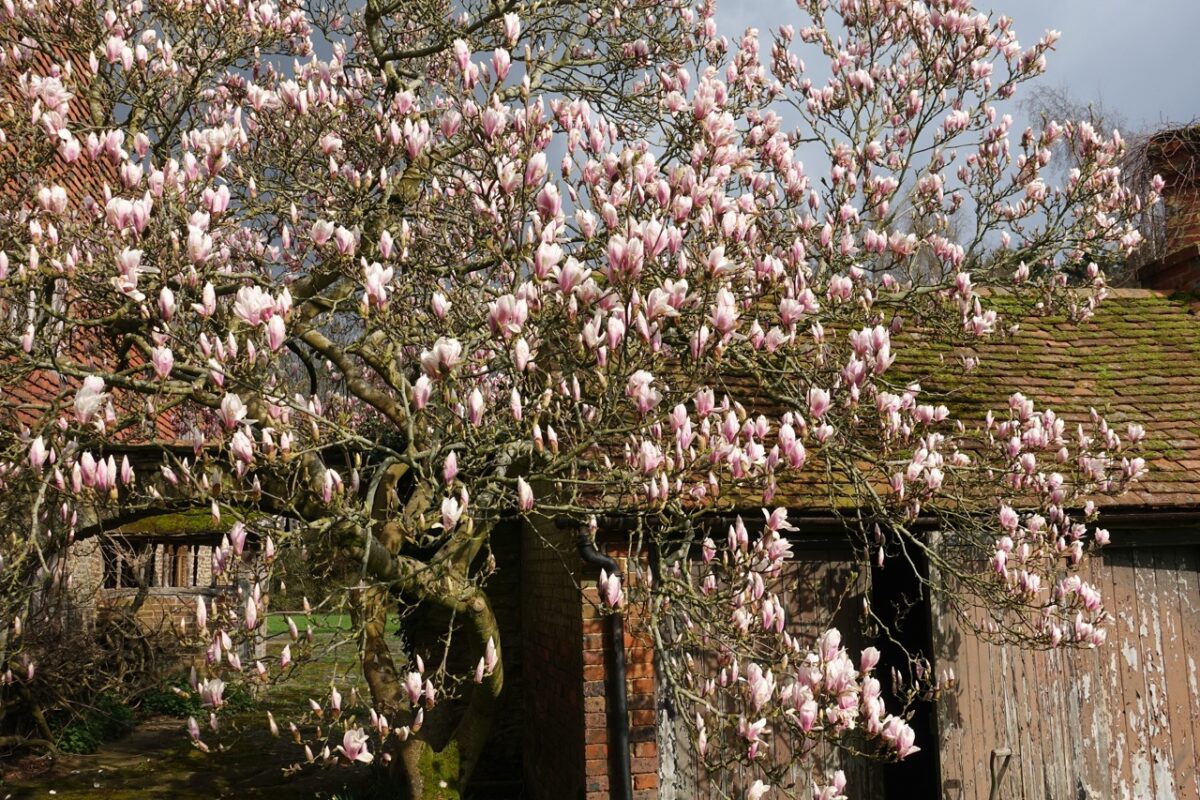
How can anyone not love a Magnolia? Their lavish flowers declare in their classy way that spring has really arrived in all its finery. People like Caroline might assume these celestial-looking beauties are all the same but it’s NOT TRUE and you must be careful to choose wisely.
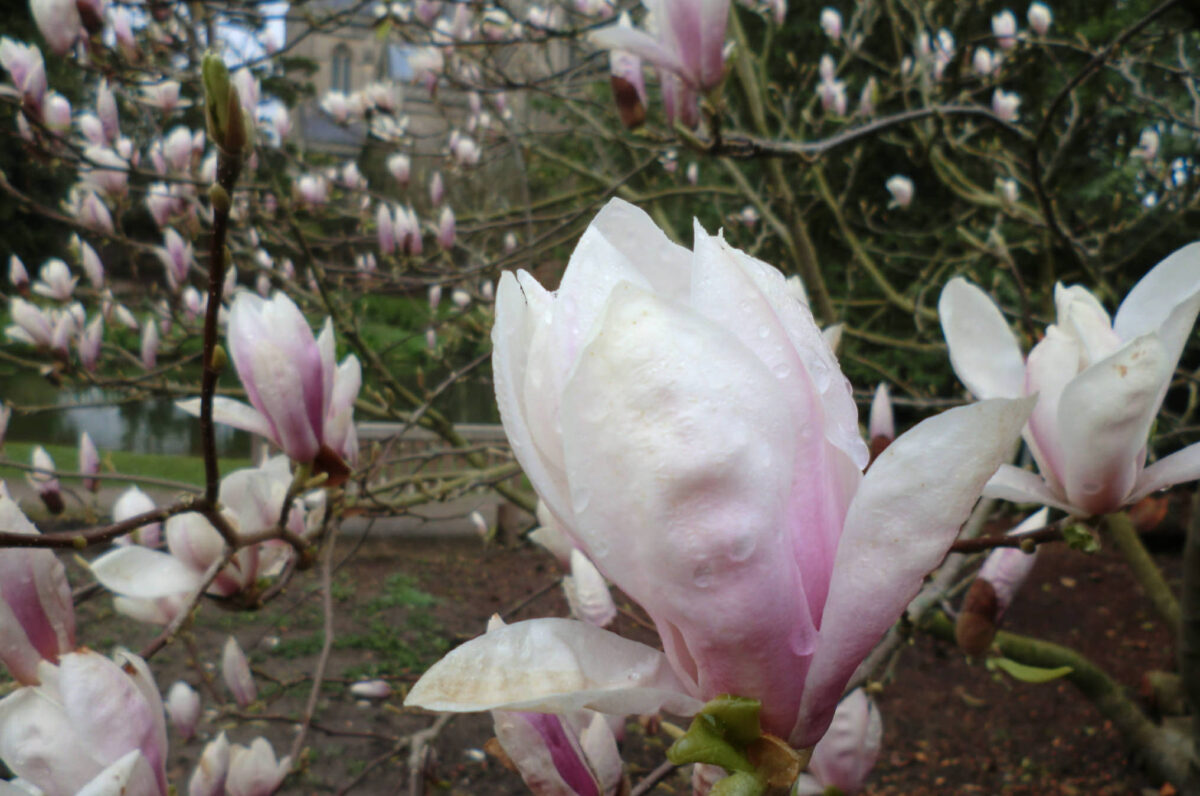
Most are deciduous (lose their leaves in winter), and bear their blossom before the leaves emerge, which lets you fully appreciate the satisfying form of the flowers. Magnolia soulangeana is the one commonly seen in suburban gardens – though, having been bewitched in the garden-centre, many people clearly failed to realise how big they grow!
The well-known one has white goblet-shaped flowers with a purple flush at the base; in France, I have a variety of this called ‘Susan’, which is slower-growing and has delectable bright plum-coloured blossom. Magnolia stellata is a smaller tree generally with lovely white strappy petals like it’s..well..(here comes the Latin teacher again) covered in stars.
If you’d rather your magnolia flowers later, on an evergreen tree, then M. grandiflora is the one for you. Again, it’s a bit of a whopper (it can grow to 90-odd feet), and in summer, the big waxy white flowers sit amongst the shiny leaves like monster moths. Try to arrange it that you can smell them (Not easy. Perhaps out of an upstairs window?) – it’s an astonishingly deep lemon-citrus fragrance.
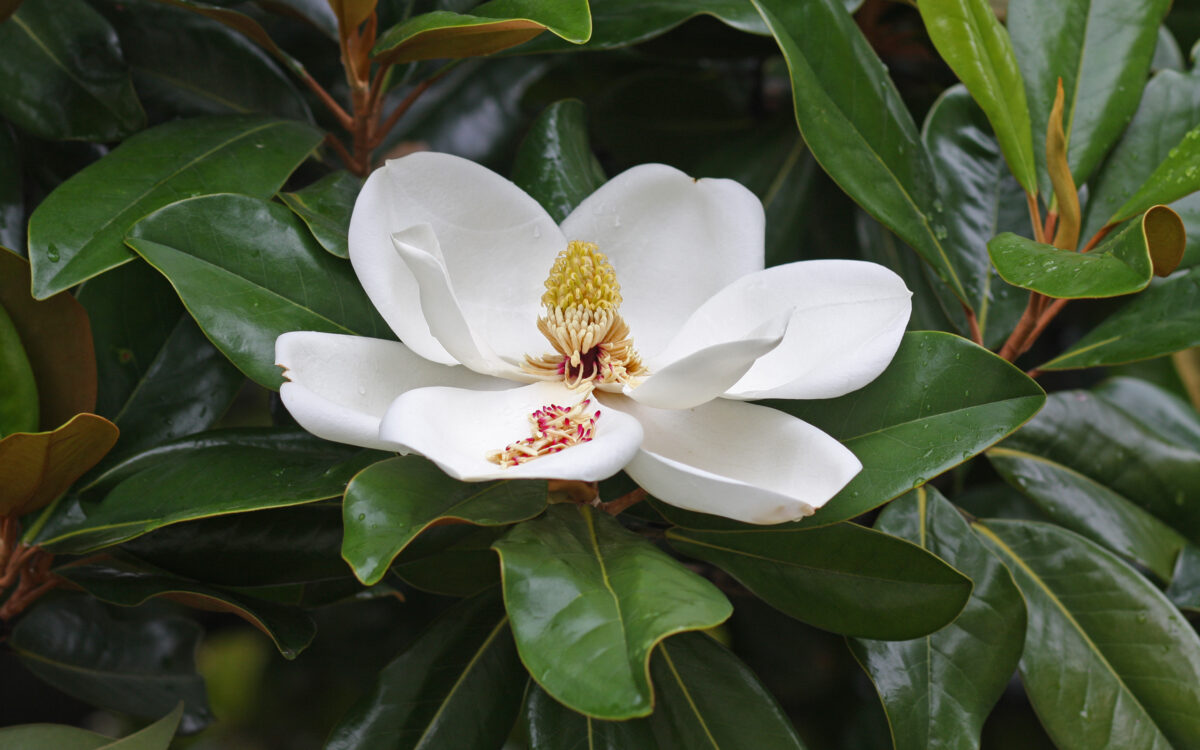
Don’t buy a tall-growing magnolia imagining you can prune it – they don’t like it, usually responding with a sulk and an Afro of shoots at the cut-point which can spoil the elegant shape. If you must prune, do it in early summer when there’s less likelihood of infection setting in. Do you have chalky soil, as I do in Eastbourne? Grow something else, they’re not for you. I expect Laura has got her usual line in weird varieties that might tempt you…

Not weird, darling …choice. But I do agree with Elaine that gorgeous as M.soulangeana can be in the right setting (see our feature pic) it will grow to dominate the average sized garden and it’s a bit like gambling the family silver on the Grand National: if you get away with a frost free fortnight in mid April your specimen will be the talk of your neighbourhood, but roughly three years out of five a frost will turn your crowning glory into a shameful brown mess. It’s like the Boat Race; there is no middle outcome, it’s either triumph or disaster.
So although Elaine is waxing lyrical about the deep pink M.soulangeana variety ‘Susan’ it will still grow into a stonking great tree, and you can get deeper coloured blooms on a more compact tree by going for one of the newer hybrids such as the smouldering Magnolia ‘Vulcan’, or its even sultrier progeny ‘Black Tulip’, whose blooms are the deepest colour of all, very attractively spherical and multi-petalled.
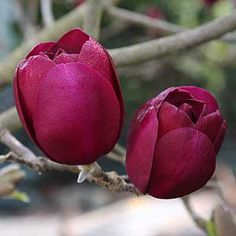
If it’s something still smaller you’re after then follow Elaine’s advice and go for Magnolia stellata but instead of the plain white species which is so ubiquitous in town gardens at this time of year you might like to try one of it’s varities such as the shell pink M. stellata ‘Jane Platt’. This was looking and smelling terrific when I toured Battleston Hill at Wisley last weekend. I would have taken E and C up after our visit to the Plant Fair a couple of weeks back, but it’s a bit of a hike for the old girl, and the younger Growbag was still quite flaky with a hangover…
As for the very desirable summer flowering Magnolia grandiflora, I have been doing everything Elaine says you shouldn’t – pruning it hard – in a confined space – at the wrong time of the year, in an attempt to wall train it up to our bedroom window (at least E would approve of this) – it’s a work in progress….

Yes well I always consider magnolias a little diva-esque for our harsher northern climes. Around this time we’re more likely to see ‘gean’ blossom (embattled little petals on sturdy, soon-to-be productive wild cherry trees) rather than the ephemeral starlets of magnolia blooms.
For instance none were obviously evident at RHS Harlow Carr garden in Harrogate this week (on our way to an ashes interment – you’ll find these steadily replace parties and weddings in your calendar), but Scotland is a different prospect again. If it isn’t horizontally sleeting it’s plunging to minus-something-double-digit overnight, sharply lengthening those odds of success. And bear in mind you may be experiencing your own ashes interment before your magnolia flowers – it’s a task they can take 20 years to get around to, comparing unfavourably even with the most unproductive husband.
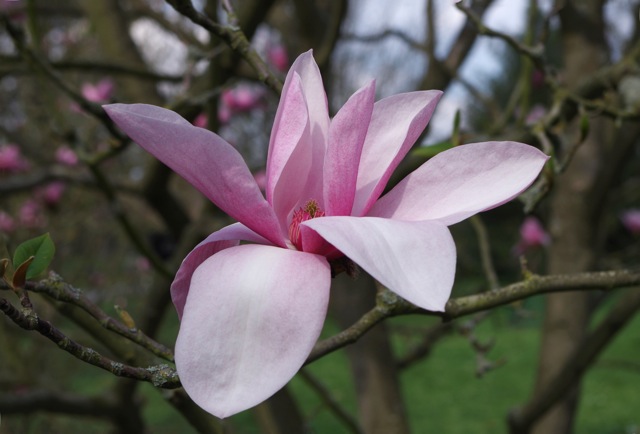
Thankfully Scotland’s gardening guru Ken Cox offers a solution: Someone has crossed the tough Himalayan M. campbellii with M. liliiflora ‘Nigra’ which flowers very young. It produced Magnolia ‘Star Wars’ about which Ken says: ‘I reckon it’s the number one magnolia now of all. It has every attribute you want, magnificent goblet flowers which open over several weeks so if there’s a bit of wind or frost you don’t lose everything in one go. It flowers from a very young age and on every single shoot, every single year.’
So at last the perfect magnolia solution and what we all need in our lives – an all-conquering super-hero.
NB: Louise chooses Epimedium warleyense as her Great Plant this Month
MORE NB: If you’d like to get a bit more gardening chit-chat from the3growbags, do sign up for our weekly post here:
